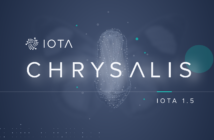What’s Ripple?
Ripple is an American technology company founded in 2012 to revolutionize the global banking system. It is important to know that Ripple is not to be equated with the cryptocurrency XRP. There are certainly older documents that prove that XRP was also called Ripple. Since the XRP initiative in 2018, however, the company Ripple has attached great importance to the fact that the cryptocurrency XRP is not called Ripple.
Ripple as a company also attaches great importance to the fact that the XRP token is not a product of the company Ripple, but an open source software which is used by the company only for the product xRapid. However, for many in the crypto community, there is no clear separation between the XRP token and the company Ripple. More about this later at the “Ripple controversy”.
Ripple’s aim is to provide a cheaper, faster and more secure payment system for the transfer of assets across national borders. Ripple is thus in direct competition with the current market leader SWIFT, which sets the current standard for the cross-border transmission of Fiat Money. Ripple provides various software solutions for this purpose. The network should scale to reach a capacity of 50,000 transactions per second (like VISA).
Thus, while Bitcoin is designed as a means of payment between two individuals for whose transfer there is no middleman, Ripple offers a payment system based on the existing infrastructure of the banks. This is also the main reason why a large part of the cryptocurrency community calls Ripple a “bankster” coin and holds a grudge against the company and the XRP token. Ripple contradicts the original vision of cryptocurrencies, first and foremost Bitcoin, which was developed as an alternative to the traditional banking system.
The history of Ripple
Ripple’s first beginnings date back to 2004, when Ryan Fugger founded “Ripple Pay” to provide the online community with a secure means of payment over a global network. However, the Ripple at the time had little to do with Ripple’s current distributed ledger technology.
Only when OpenCoin Inc. was founded in 2012 by Chris Larsen and Jed McCaleb did today’s Ripple project take shape. A new payment protocol called “Ripple Transaction Protocol (RTXP)” has been developed. This forms the basis for today’s distributed ledger protocol from Ripple.
In September 2013, OpenCoin Inc. changed its name to Ripple Labs Inc. and released the source code of the peer-to-peer network as open source software. At that time, Ripple Labs also began to promote the use of Ripple technologies to financial and banking institutions. Two years later, in October 2015, Ripple Labs changed its name to Ripple.
The different technologies of Ripple
Ripple offers its customers, financial institutions and payment service providers three different software solutions: xCurrent, xRapid and xVia.
xCurrent
xCurrent is Ripple’s enterprise software solution that enables banks to make cross-border payments using the Inter-Ledger Protocol (ILP). With xCurrent, banks send real-time messages to confirm the payment details before the transaction begins and to confirm the delivery as soon as it is done. The XRP token is not required for this solution.
The technology is currently (as of October 2018) Ripple’s most widely used solution for banks and financial institutions. More than 100 financial institutions already use xCurrent both in real operation and in test operation. Partners include well-known banks and financial institutions such as Santander Bank, SBI Holding, Rakbank, BBVA (second largest bank in Spain), AXIS Bank (third largest private bank in India), UniCredit, Bank of America Merrill Lynch, ReiseBank, Mitsubishi UFG (largest bank in Japan) and Akbank (Turkey).
xRapid
xRapid is aimed at payment service providers and other financial institutions that want to minimise liquidity costs, according to the company’s website. The xRapid solution uses the XRP token to provide on-demand liquidity. This can be explained as follows.
For international payments, liquidity is often very low, as the exchange of different fiat currencies is subject to price fluctuations. This undermines the stability of a transaction. The banks involved in an international transaction must therefore hold nostro accounts in the other currency. However, maintaining these accounts is very expensive as it is “dead capital”. Therefore, only a few banks worldwide can afford to hold nostro accounts for the multitude of international currencies. Small and medium-sized banks prefer to pay high fees to liquidity providers (large banks) instead of maintaining their own nostro accounts.
XRapid offers a solution that is particularly aimed at small and medium-sized banks that cannot afford nostro accounts. XRP replaces the large number of nostro accounts as the “bridge currency“, since the national currency must only be exchanged for XRP. xRapid users only need to maintain liquidity in XRP instead of hundreds of different currencies.
xRapid pilot projects have shown that banks can save between 40 and 70% of costs. In addition, cross-border transactions take place within a few seconds and do not last 3-5 days.
XRapid is officially launched at the beginning of October and can be used commercially since then. With the launch of xRapid, three customers – MercuryFX, Cuallix and Catalyst Corporate FCU – went live.
xVia
xVia is a user interface designed to make xCurrent and xRapid more user-friendly. Through API integration, xVia connects to financial institutions that use Ripple’s products to track payments and create invoices.
How does Ripple relate to XRP?
Ripple always emphasizes the independence of the XRP token. Nevertheless, a connection cannot be denied. All 100 billion XRP tokens are pre-mined. About 40% of them are in circulation, while the rest are owned by Ripple. About 60% was transferred to an escrow account in May 2017 due to manipulation concerns by the Ripple team.
The XRP tokens are to be introduced to the market in stages and in parts of a maximum of one billion per month. However, unused amounts may be returned to the escrow account at the end of the month.
For many investors and Ripple critics, the fact that Ripple owns nearly 60% of the total XRP supply is a clear sign of centralization and Ripple’s dependence on XRP. With this amount Ripple can significantly influence the price of the XRP token. From an investor’s perspective, this therefore requires a high degree of confidence that Ripple will not manipulate the XRP price.
Subscribe to our daily newsletter!
No spam, no lies, only insights. You can unsubscribe at any time.
Bottom line: Is XRP worth an investment?
If Ripple is able to convince more banks of xRapid and XRP technology, the price could skyrocket. Should Ripple actually succeed in overthrowing the giant SWIFT and taking over its transaction volume, XRP could be a very good investment. But don’t neglect the fact that Ripple still has 60 billion XRP in their treasury and can therefore more than double the offer of XRP.
If you are now interested in investing in Ripple, you can first check out our Ripple (XRP) price chart for the current XRP price or go straight to our tutorial on how to buy XRP.






